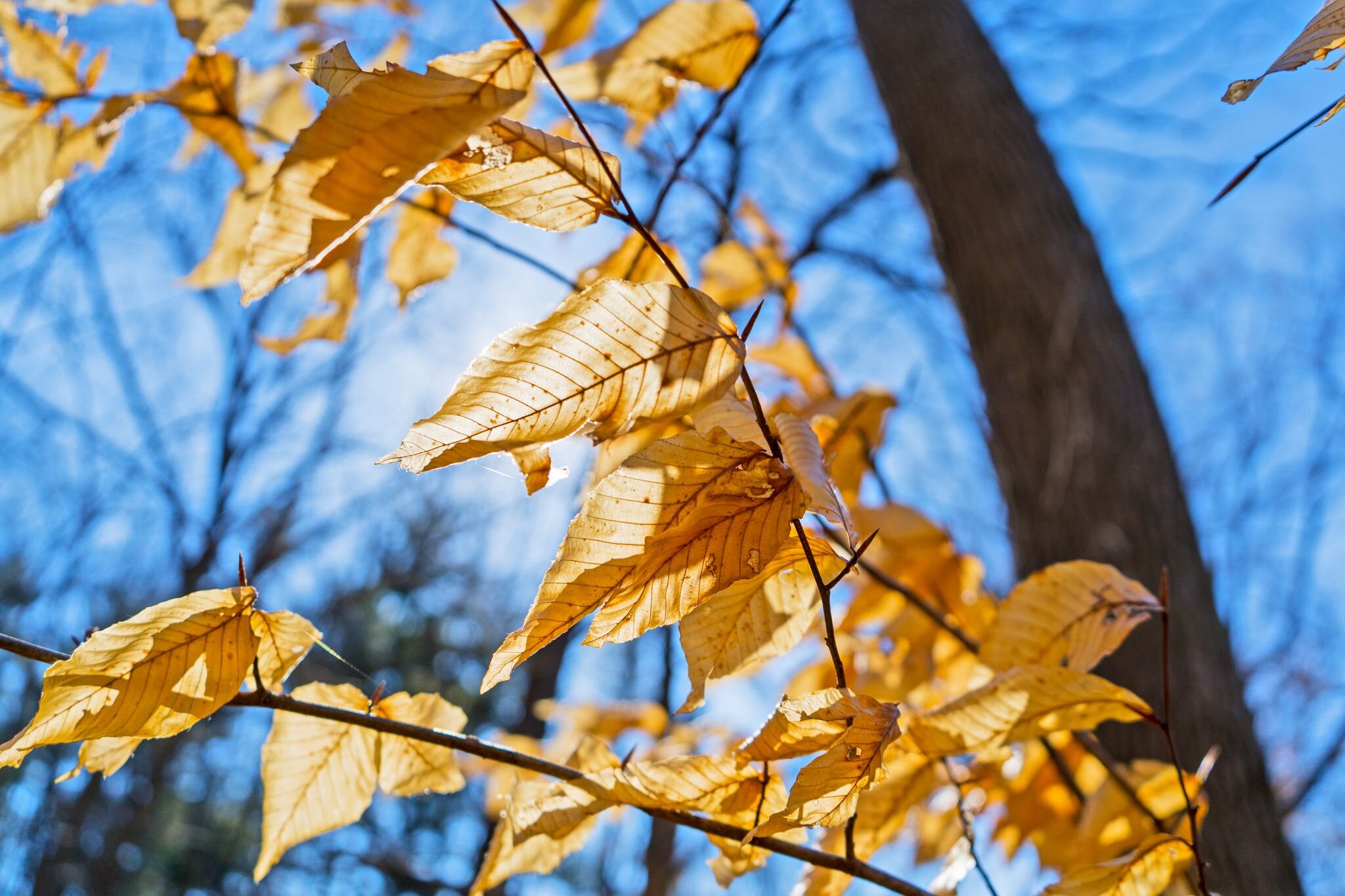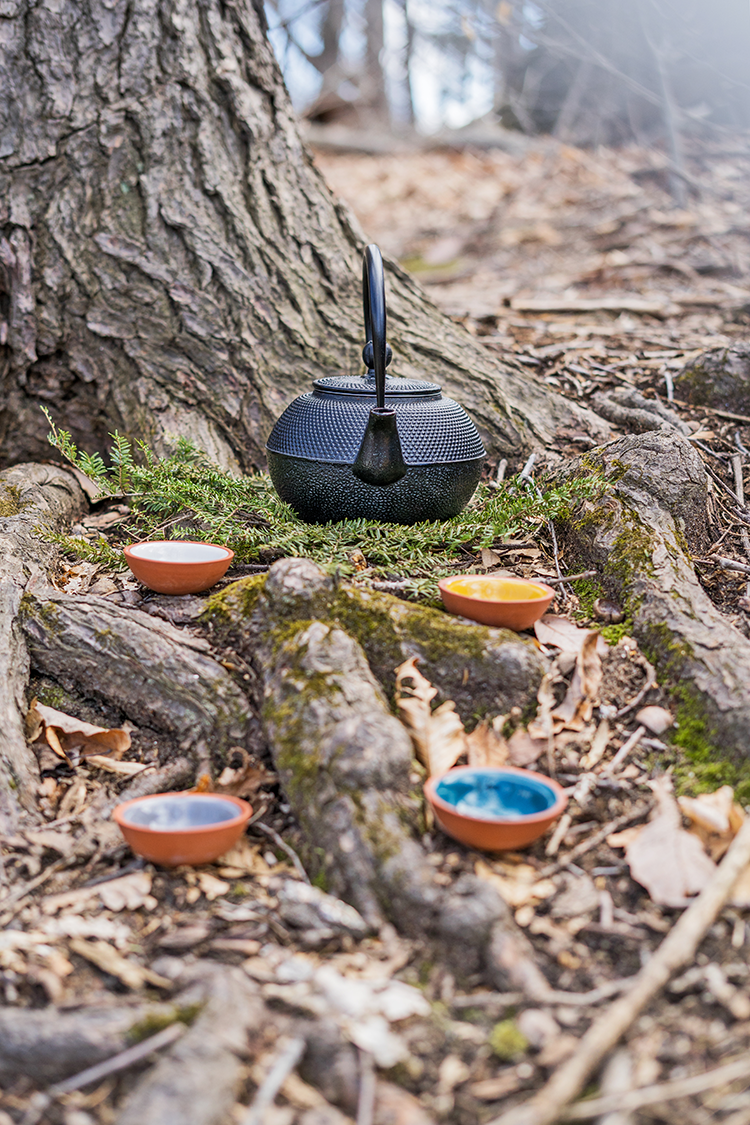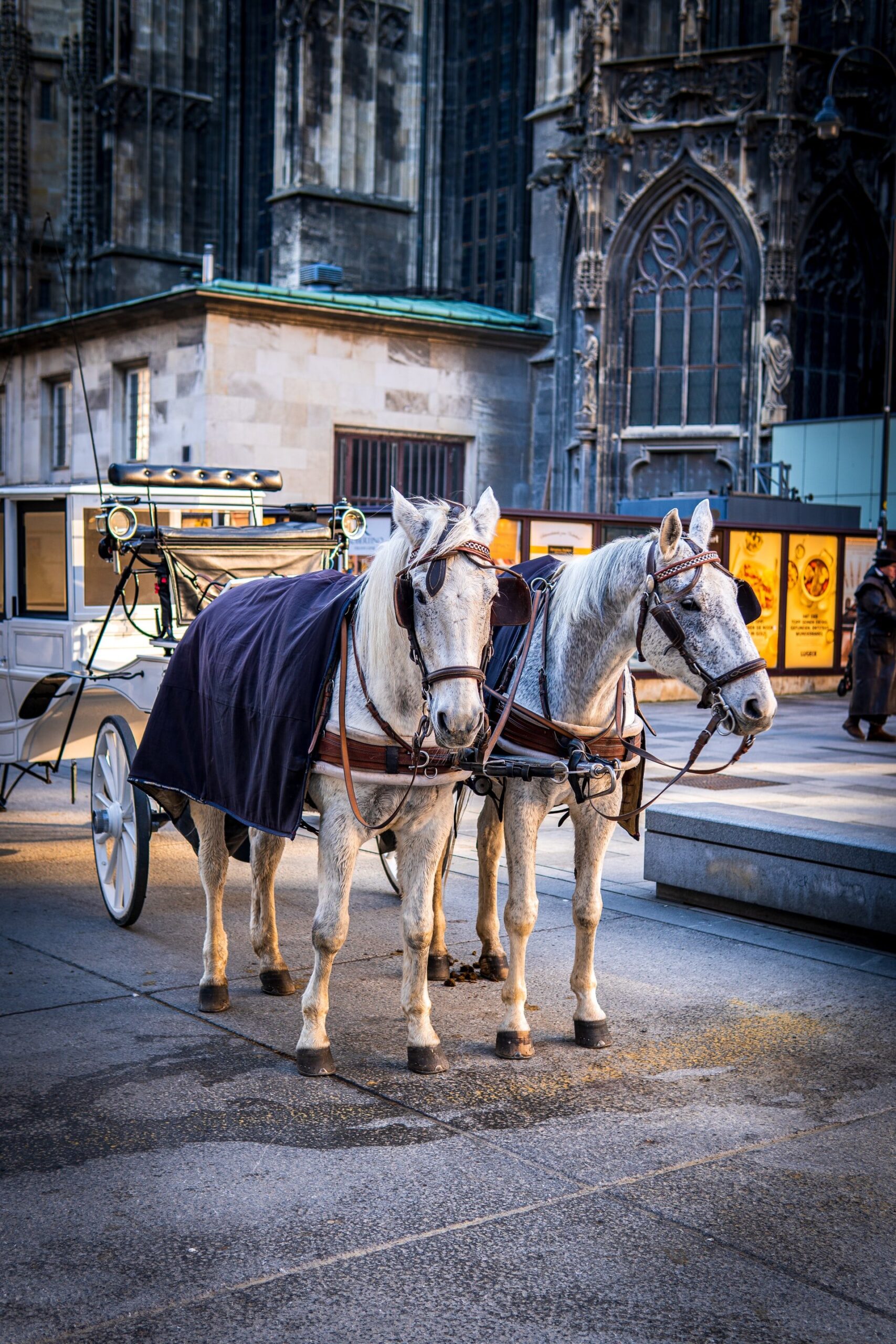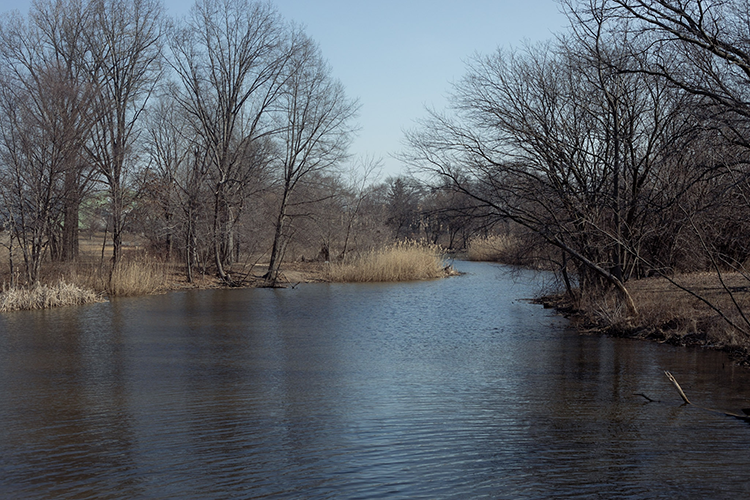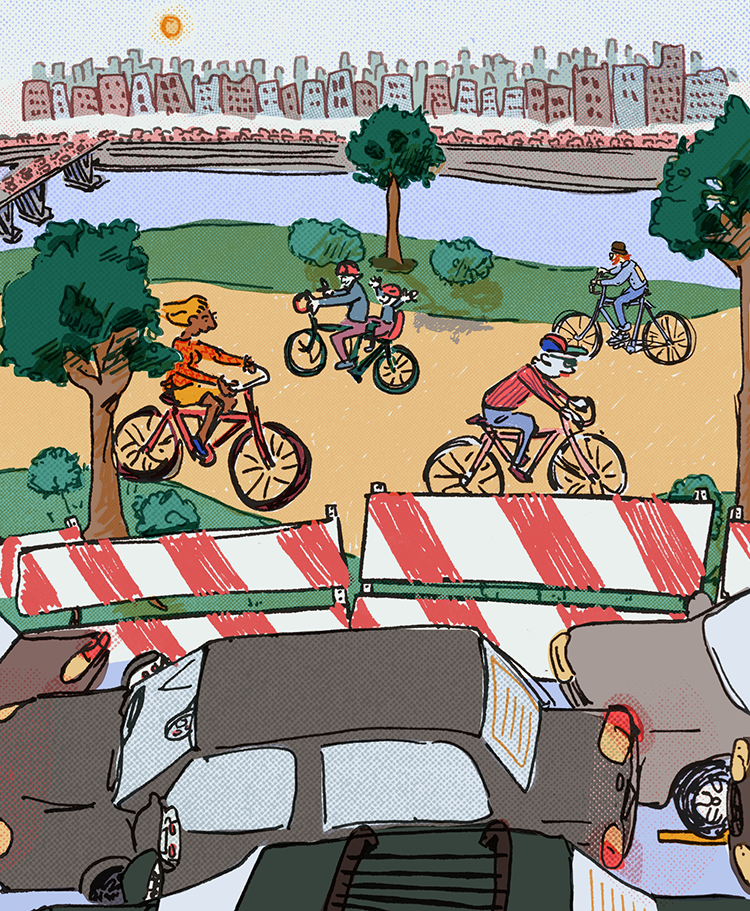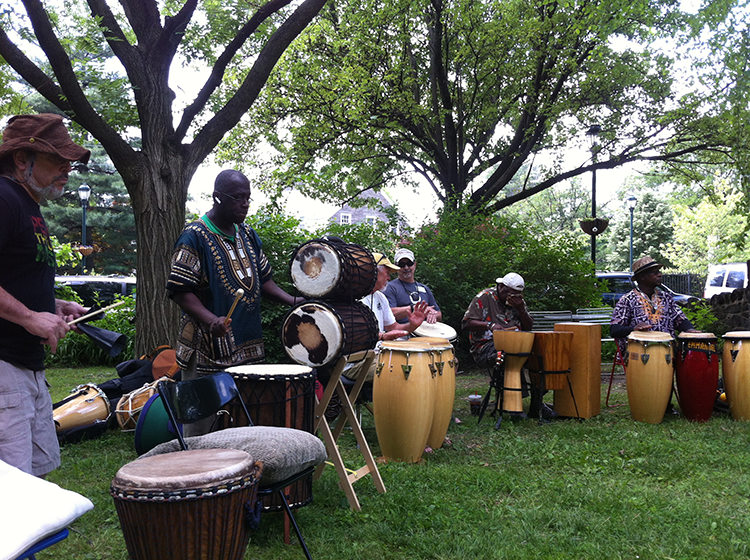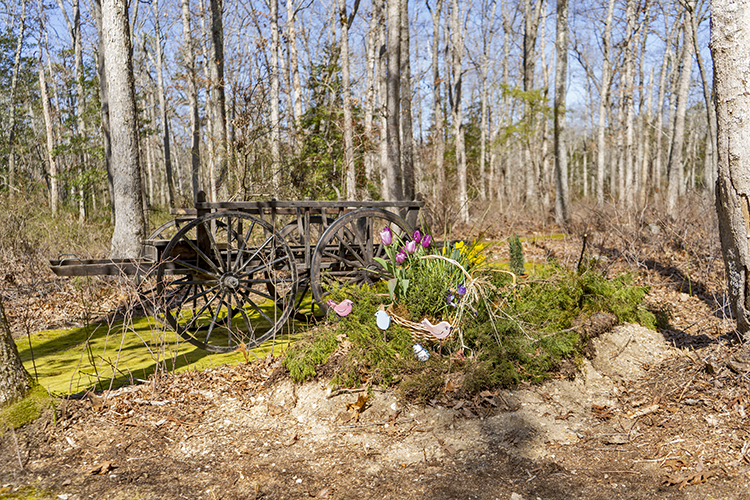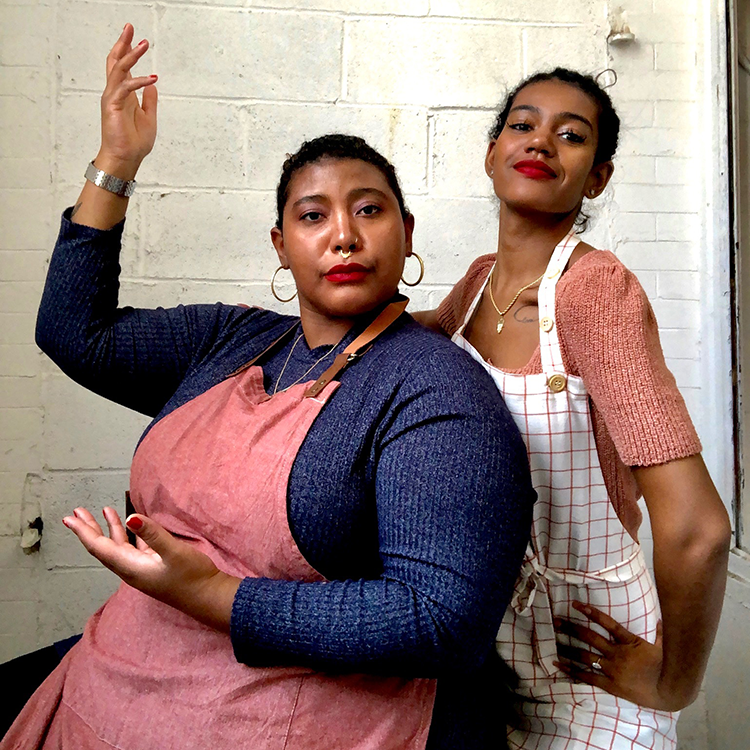Anisa George sees a strong connection between theater and forest therapy: they both involve improvisation.
“You enter the rehearsal space, invite the ensemble to try different things, to engage with the environment,” George says.
George was drawn to the practice because of its focus on the body and the natural world. Her career as an artistic director, actor and producer has always focused on exploring body movement, so the practice felt natural. A certified guide through the Association of Nature and Forest Therapy Guides and Programs (ANFT), she has been leading walks in parks and forests, including Bartram’s Garden and Wissahickon Valley Park, since 2019.
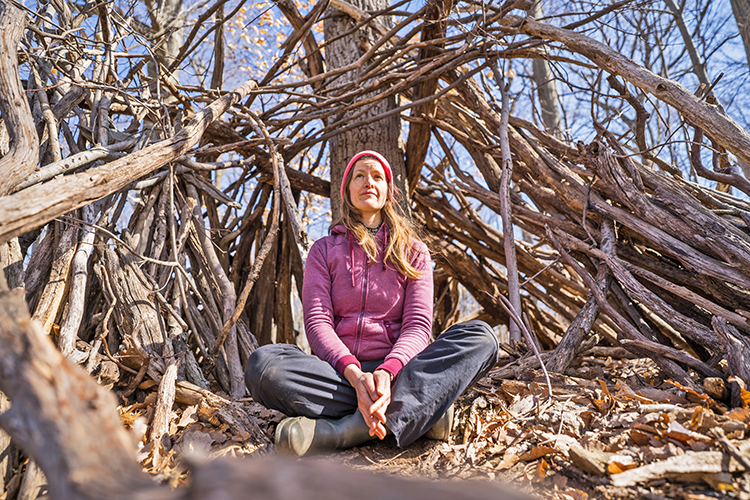
Forest therapy was first introduced to the U.S. when M. Amos Clifford founded ANFT around 2012. The practice he developed draws from the Japanese tradition of shinrin-yoku or “forest bathing”, which involves immersing oneself in nature.
“Forest therapy is about creating a safe, no-pressure space.”
— Jess Isaacs-Blundin, forest therapy guide
“Forest therapy is about creating a safe, no-pressure space,” says Jess Isaacs-Blundin, another ANFT-certified guide. The experience involves a guided walk and invitations for participants to engage with their senses—like feeling the texture of tree bark or the chill of a breeze as it blows by.
After an invitation, participants are encouraged to speak about what they felt exploring the natural environment. “People come back and talk about what the experience meant to them,” George says.
Forest therapy can be broken down into three parts: the sharing circle, the guided walk and the tea ceremony.
Isaacs-Blundin describes the sharing circle and the tea ceremony as “the space in between normal life and transcendent experience.”
The distinct sections of the circle, walk and tea ceremony make forest therapy easily recognizable and familiar to participants. The three parts create “a standard sequence by which we know what forest therapy is,” Isaacs-Blundin says.
During the tea ceremony, participants share tea and food with the guide. Often the tea is made using foraged plants; Isaacs-Blundin likes to use white pine or spruce in her tea. The tea ceremony, like the rest of forest therapy, can look different based on the guide leading the practice.
George and Isaacs-Blundin previously worked together at Wild Philadelphia, which Isaacs-Blundin founded in 2019 and closed in March 2021.
Isaacs-Blundin and George continue to lead guided walks. Anyone interested in participating in one of George’s Wissahickon walks can sign up for a walk on Airbnb.
“Everyone should try it once,” George says.
Lauren Kahn, a licensed marriage and family therapist and ecotherapist, utilizes the Wissahickon during her sessions as well. During a session, clients walk through the woods with Kahn and also find private spaces to practice mindfulness.
Ecotherapy sessions can feel very public when compared to the “container of the therapy office,” Kahn says. She discusses confidentiality concerns with her clients before a walk so that they are prepared for the possibility that someone walking by may realize a therapy session is taking place.
During the walk, Kahn gives her clients choices, such as which direction to choose when they reach a fork in the road. Kahn talks about the metaphor of a fork in the road in life and ways clients may feel stuck. Choosing a path to walk can help clients reflect on what choices they are struggling with.
“Where do you want to go? What do you want to leave behind?” Kahn will ask her clients.
In addition to dealing with difficult choices, Kahn helps clients bring attention to the woods and to their own bodies.
“I talk about the pace they’re moving and it often reflects the pace in which they’re moving in life … What does it feel like to slow down? We incorporate mindfulness so people notice the pace at which their thoughts are moving along,” she says.
Nate Schlingmann, counselor and psychotherapist, also uses the Wissahickon for his nature therapy sessions. In most sessions, he sits in a tent with a client and goes through the session almost identically to how he would in the office.
The natural world may interrupt what a client is saying. The sound of falling trees or bird calls serve as a reminder of the passage of time. If a client is talking about a traumatic event, the natural noises outside can help them remember that the event happened in the past.
“If someone gets to a place where they’re ready to share, there’s not just this resounding sense of what they’re saying in a four-cornered room. Nature is listening too,” Schlingmann says.
Schlingmann finds that some of his clients are dedicated to nature therapy and consider it a valuable way to connect during COVID-19. He sees clients mostly over Zoom now, so nature therapy has been a special way to experience therapy in person.
Kahn hopes to see more nature incorporated into therapy, as well as more interaction with the outdoors.
“It is the way of the future,” Kahn says.



